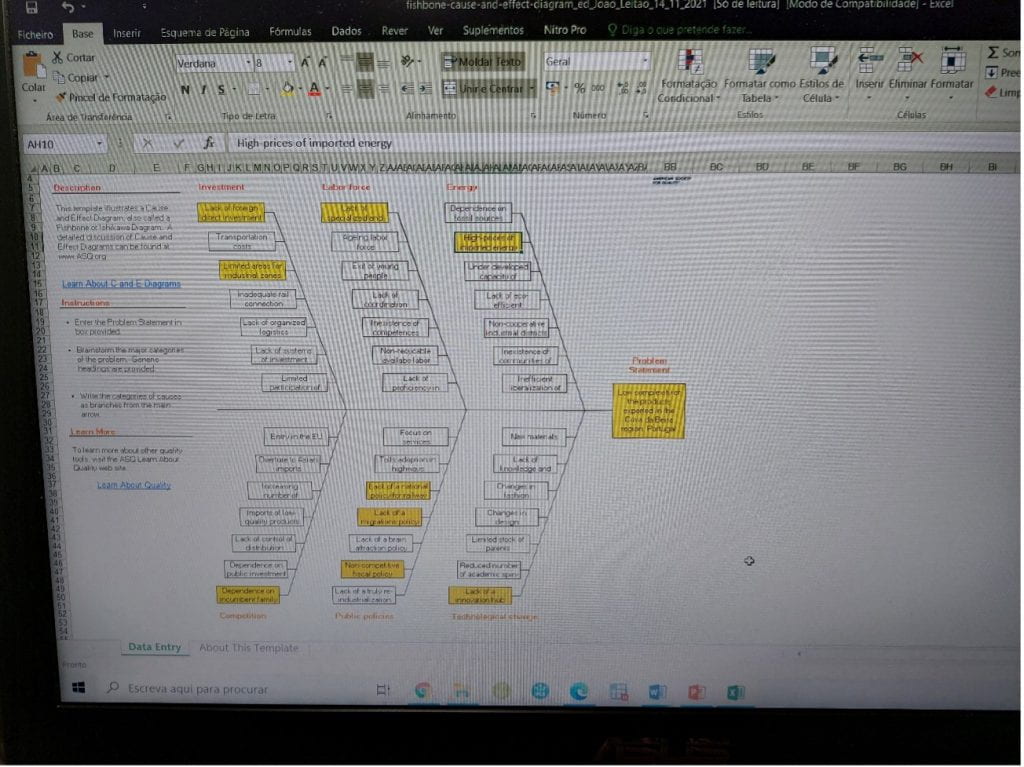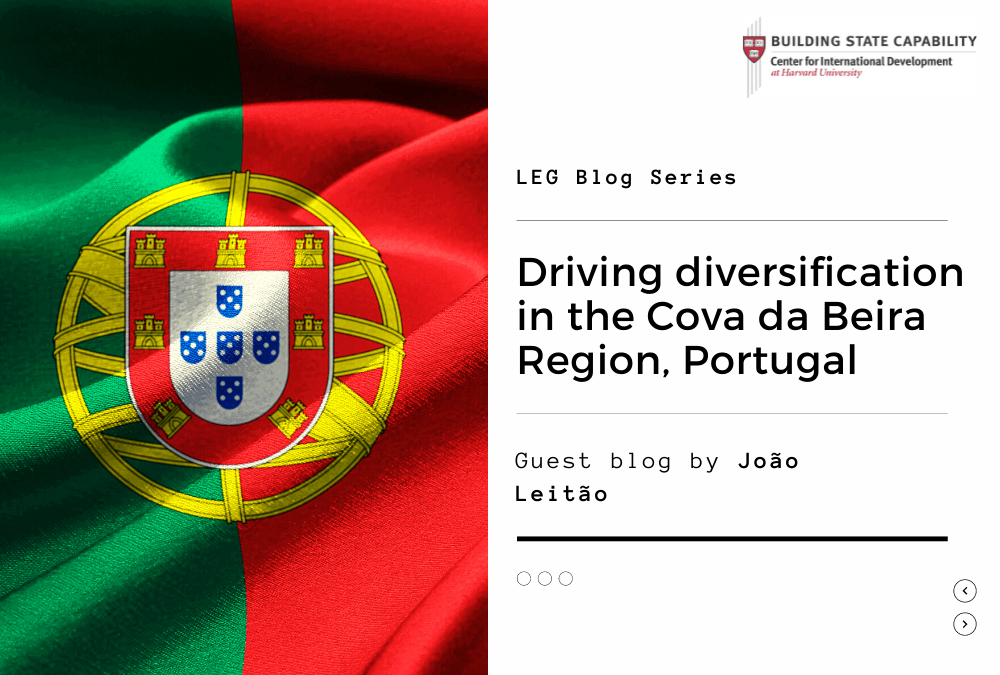Guest blog by João Leitão
- Growth challenge: Cova da Beira Region: Driving Diversification to Complexity
- Country/region/municipality: Portugal/Cova da Beira/Fundão
Learning how to drive the Cova da Beira Region, Portugal: From a stepping-stone to complexity. Reflections on LEG 2021, October 4 – December 10, 2021, from the Cova da Beira Region, Portugal

This is definitively a remarkable teaching/learning experience, absorbing complex issues from leading scholars and practitioners, and establishing a network of colleagues that are respectful human beings and teammates at the ‘Creative Tree’.
The main five key ideas/learning that I am taking away from this course on ‘Leading Economic Growth’ are the following:
- The ‘Scrabble’ gaming approach and the need for ensuring equity in access to the maximum number of letters, especially in terms of public goods provision, determining which letters are needed, and which ones will effectively work for leveraging growth.
- The fish-bone (please see the picture below) as an operative tool for identifying and revising the problem (e.g. the head of the fish), the causes (i.e. the bones), and the entry points, as well as preparing the framework for assessing possible positive deviations from changes to be introduced.
- The need for co-creating and co-implementing a parsimonious industrial policy that can help to diversify the product space of the Cova da Beira Region, Portugal – a low-industrial density region, leading to more complex and sophisticated product space.
- The power of exports in leveraging growth positioned as a stepping-stone for a lagged region that needs to be able to attract and retain bot immigrant and emigrant (coming back) human capital, as well as significant foreign direct investment and qualified forms of entrepreneurship in connection with higher education institutions and municipalities.
- The inequality in productivity is a critical competitive factor that needs to be surpassed since there is an intrinsic need for increasing the size of the ‘pie’, by connecting the letters of the ‘Scrabble’ gaming approach, targeted to produce longer and more complex words, at the regional level.
Bearing in mind my growth challenge, that is, the low complexity of the products exported in the Cova da Beira Region of Portugal, the main progress that I have experienced is the enrichment, in an iterative way, of my former vision on regional growth – which connected with David Ricardo’s vision on absolute comparative advantage, which is dependent in a certain sense on the stock of natural resources. During the course, I was able to acquire new knowledge, by integrating the Theory of Complexity, the PDIA Approach, and the Behavioral Economics Theory, into the design of a strategic and participative approach to be iteratively applied to the growth problem of the Cova da Beira region.
During the course, this challenging problem was revisited, integrating not only a complex product space perspective, but also an inclusive approach through a responsible immigration policy, in order to provide a renewed solution for a low-industrial density region, moving from a limited standard of diversification into a more complex space of products to be exported. This was achieved by identifying entry-points, new public policies (e.g. immigration, smart inclusion, social innovation, foreign direct investment, and technological entrepreneurship), possible changes (or pivots), positive deviations, and last but not least, the groups of key-actors to be involved in a joint exercise of multiagent leadership for authorizing the change, motivating people to change, and convening the other groups together.
The contents learned and the competencies acquired in this course, are already in use, by helping the Intermunicipal Community of the Beiras and Serra da Estrela region, where the Cova da Beira Region takes part, to prepare a fishbone diagram that will be the cornerstone of the participatory planning exercise of the Action Plan in preparation, for operationalizing the Strategic Plan for Beiras and Serra da Estrela region 2030, and the National Recovery and Resilience Plan. Moreover, the fishbone tool is going to be adopted, in the scope of an Erasmus + project, under my coordination: R&I Loop (R&I Loop – My WordPress Blog (riloop.eu); devoted to the development of an operational tool for ‘Civic Universities’, involving four Universities located in Germany, Italy, Spain, and Portugal.
The open questions that a next course could help me answer are: (i) What is the optimal governance architecture to be implemented in the context of a low-industrial density region (that is, more decentralized or even more autonomous, in terms of government and public budget)? Adding to the previous: (ii) Which type of leadership and innovation at the public institutions and public goods provision need to be adopted? And how can we have foresight and control the evolution of the progress of a new strategy targeted to foster the institutions’ quality, stock of human capital and talent, innovation, complexity, and exports?
A final word of sincere gratitude to the instructors, Ricardo and Matt, since you truly developed in me the sense of ‘Us’, and I hope to come back in person to the Harvard Kennedy School.

This is a blog series written by the alumni of the Leading Economic Growth Executive Education Program at the Harvard Kennedy School. 61 Participants successfully completed this 10-week online course in December 2021. These are their learning journey stories.
